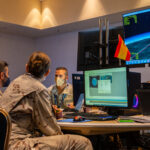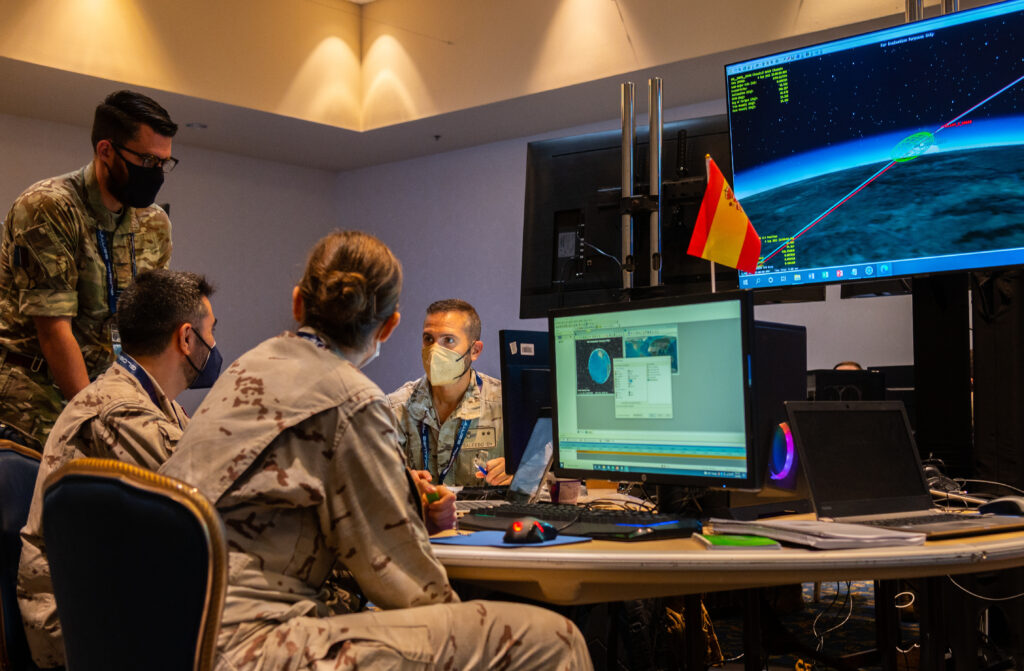Orbits
Space Situational Awareness Activities of Other Countries
Spain signs up as 25th nation in Artemis pact


Officials from NASA and the U.S. State Department gathered in Madrid Tuesday as Science and Innovation Minister Diana Morant signed off for Spanish agreement to the Artemis Accords, marking the 25th nation to join the U.S.-led treaty to govern conduct in orbit and beyond.
Rivals Launch Military Satellites Amid U.S.-led Space Defense Drills


A flurry of military and intelligence satellite launches by rival powers this month came as the United States and two dozen partner nations wrapped up the largest global space defense wargame in history.
Russia launched what some leaders have described as a spy satellite for Iran and its own on-orbit snooping satellite Cosmos-2558, which is circling Earth in an orbit conspicuously close to a recently launched U.S. National Reconnaissance Office satellite, a Netherlands researcher confirmed.
2016 – Canada: Sapphire and NEOSSat – Snapshot
Two low Earth orbiting Canadian satellites, Sapphire and NEOSSat, provided spaceborne space situational awareness (SSA) for Canada during 2016. While they are both SSA satellites, they fulfill different SSA missions. Sapphire, a Canadian Department of National Defence (DND) satellite launched in 2013, is a part of the Canadian Space…
2015 – Canada: Sapphire and NEOSSat – Snapshot
Canadian SSA operations are conducted using two satellites: Sapphire and NEOSSat. The Canadian Department of National Defence (DND) uses Sapphire, which moves around the Earth in a sun-synchronous orbit to detect the reflections of other objects in space. It entered its five-year operational phase in early 2014, monitoring thousands of space objects every 24 hours in 2015. Data collected from Sapphire is shared with the U.S. Space Surveillance Network.
2014 – Canada: Sapphire
Launched in February 2013 and fully operational as of January 2014, the Canadian Department of National Defence’s (DND’s) Sapphire satellite was designed to provide data about space objects orbiting the Earth. Sapphire is in a sun-synchronous low Earth orbit of ## kilometers (## miles). Sapphire’s orbit around the Earth aligns with the Sun in such a way to allow its telescope to see the brightest reflections possible of other objects in space.
2013 – Canada: Sapphire
The ability to minimize false detections of missile launches is a feature of Canada’s Sapphire spacecraft, launched in February 2013. The C$## million (US$## million) spacecraft, which features a unique orbit that positions it to track light reflected off of objects in space, offers space surveillance data to both Canada and the United States. Canada’s Sapphire satellite began contributing data on orbiting space objects to the Space Surveillance Network (SSN) system in January 2014.
2012 – Canada: Sapphire
The ability to minimize false detections of missile launches is a feature of Canada’s Sapphire spacecraft, launched in February 2013. The C$## million (US$## million) spacecraft, which features a unique orbit that positions it to track light reflected off of objects in space, offers space surveillance data to both Canada and the United States.
Infrastructure: Space Infrastructure – TSR 2012
2010 – U.S. Space Surveillance Network – Snapshot
One specialized type of system that uses both satellites and ground stations is dedicated to space situational awareness (SSA). An SSA system tracks satellites and other objects orbiting Earth. This is accomplished through a series of ground stations which are dedicated to scanning the sky via a variety of means in order to detect and plot the courses of objects in space. This data is then compiled and analyzed to create a series of predictions regarding possible collisions.